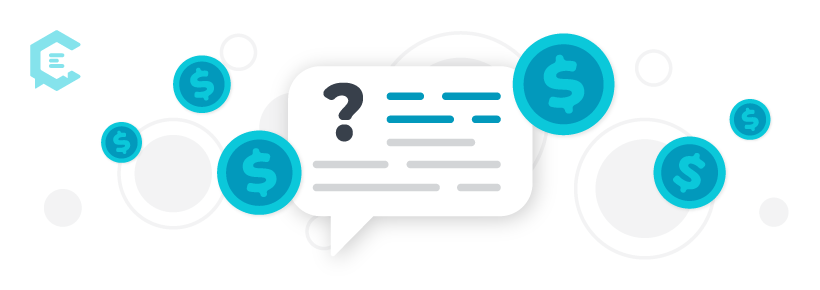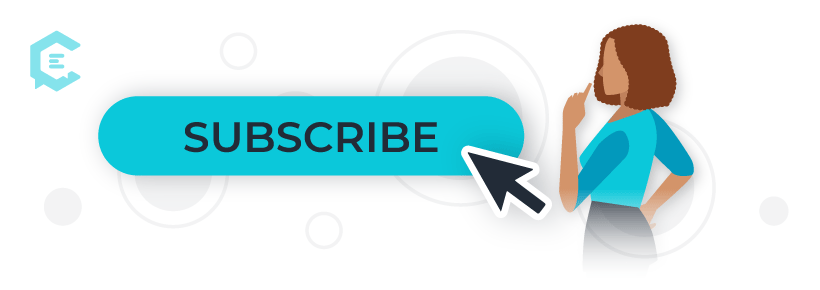You are probably aware that social media has continued to develop as a pay-to-play medium, but if your organization is like many, you likely don’t have a manager responsible for cross-platform ad spend — including social media ad buying — who can advise on guidelines, trends, and best practices.
Even if you have a social media manager, the world of social media advertising changes so quickly that social media ad buying opportunities can be difficult to keep up with for someone who isn’t solely responsible for ad spend. However, if it isn’t in the plan for your organization to employ a full-time ad manager, you still can make a significant impact with social media ads — but you do need a strategy.
10 questions that’ll help develop your social media ad spend strategy
This guide includes the top 10 questions you should be asking yourself as you explore social media ad options and provides the answers you need in order to make an impact with your ad buying.
1. How do I justify the initial ask for a social ad budget?
It is entirely possible that your organization leadership may not understand that just because your company has a certain number of followers on a given platform, that doesn’t mean you will reach all of your followers each time you post. Perhaps the absolute best way to justify the initial request for an ad budget for your social media messaging is to clearly point out how few people see the posts that your organization shares organically.
According to the Digital 2020 April Global Statshot report, the average organic reach for a Facebook page is roughly 5 percent of its audience. Yes, that means that essentially only about 1 in 20 of your Facebook followers are seeing your content, on average. Similarly, brands on Instagram are seeing a lower engagement rate with their content. A 2019 report by TrustInsights shows that Instagram engagement rate decreased by roughly 33 percent during the first half of the year.
If your organization has invested in a robust social media strategy that includes consistent content creation, the shortest road to reaching more people is by having a social media ad spend budget.
2. What goals should I set for my social ad campaigns?
Getting more people to see your content is nice, but getting more people to do something because of your content is imperative. Keep in mind that your social media budget should be designed to lead people to take action in a way that proves to be advantageous for your organization.
Some examples of goals you can set that a social media ad strategy can help you accomplish include:
- Build Community: An engaged audience should be a vital part of your social media strategy. Your social media ad budget can help build this community. Both Facebook and Twitter allow companies to run ads to gain followers. The data point to pay attention to if you are planning on running an ad like this would be cost-per-follower.
- Create Engagements: The better your brand does at creating engagements on social media, the more the social platforms will do to deliver your content to a larger audience. The key data point to review with this should be your cost-per-engagement. Generally speaking, the lower the cost, the better the content. Remember that, even if you have a large social media ad budget, you can’t really buy yourself into relevancy. Create content that first performs well organically, then use ad units to supplement the organic engagement.
- Drive Web Traffic: One of the most popular ad units for brands are those that are built to drive traffic back to your organization’s web page. Many ad units have call-to-action buttons that users can click on to go directly to your web presence. The cost-per-click ratio is a key data point to review in these campaigns.
3. Who is my social media audience?
Your audience will vary depending on your organization and your objectives, but there are some standard pieces of information about your audience and how it relates to your social media ad strategy that you should keep in mind. First, you should define your primary audience. Conducting audience research and developing audience personas is one effective way to get to know more about who your audiences is and what they like (and dislike).
Having said that, one of the beautiful things about reaching audiences with social media ads is that you can select different audiences for each ad unit you develop. For example, Facebook has organic and paid audience targeting options that allow you to get granular with a message and an associated audience. Among other characteristics, ad buyers can target their audiences based on education, generation, home, politics, life events, gender, relationship, etc.
The ability to target goes even deeper. You also may target your audiences by interest. This includes preferences in entertainment, family and relationship background, taste in food, favorite activities, shopping preferences, etc. In short, yes, you certainly should get to know who your audience is. Then, social media platforms will allow you to pinpoint ways to reach your existing audience and discover ways to find others who may also be interested.
4. On which social media platforms does my audience spend time?
As we discussed previously, you have many opportunities to reach audiences in different ways, but there is some basic information about audiences that you can gather that will help you know where your audiences spend most of their time.
The following items will help you better understand which social platforms house the audiences you most want to reach:
- Facebook: Globally, Facebook skews more heavily male than it does female — with 1.19 billion female followers and 1.51 billion male users. The largest single demographic of users or males between 25-34 years old — with about 19 percent of Facebook users falling in this area. The second-largest global audience consists of female users between the ages of 24 and 34 — with about 13 percent of users falling in this category. In the United States, nearly 70 percent of all adults use Facebook. Nearly a quarter of all Facebook users are between the ages of 18-24.
- Instagram: Instagram features a slightly larger female audience than a male audience, with 510 million female users and 490 million male users. Of the billion global Instagram users, roughly 130 million reside in the United States. Roughly two-thirds of 18-29-year-olds in the United States are Instagram users. Nearly 300 million 18-24-year-olds use Instagram and nearly 350 million 25-34-year-olds use the platform.
- Twitter: Roughly 1 in 5 adults in the United States use Twitter. The global audience for Twitter is 340 million, with about 40 percent of those users utilizing the platform daily. Likewise, roughly 40 percent of Twitter users in the United States are between the ages of 18-29, with 26 percent of users between 30-49.
- TikTok: More than 40 percent of TikTok’s 800 million active users fall between the ages of 16-24, meaning TikTok has a comparatively younger audience than many of the other social media platforms. Though there is a large global audience, a significant portion of that audience resides in China and India — with Chinese users accounting for 80 percent of time spent on the app in 2019 and 43 percent of new TikTok users coming from India. Roughly 9 out of 10 TikTok users use the app more than once per day.
- YouTube: Roughly 75 percent of adults in the United States use YouTube — including nearly 80 percent of adult males. YouTube has a significant audience across age groups, but it is especially popular among younger users, with 77 percent of 15-25-year-olds in the United States on YouTube. Approximately 15 percent of YouTube site traffic is driven by users in the United States. Thought YouTube has a young user base, it also has older users, with more than half of people over age 75 saying they watch videos on YouTube.
5. What do I want my social media audience to do?
This question is closely tied to the “What goals should you set for your social media campaign?” question, but it is important to also know specifically what it is you would like your audience to do because of your social media ad spend. Developing a quality call-to-action allows your audience to know exactly what you are inviting them to do.
There is no limit on good ideas for CTAs, but if you are looking for consistently effective options, consider one or more of the following:
- Sign up
- Subscribe
- Try for free
- Get started
- Learn more
- Join us
Brands like Netflix, Brooks Running, Uber, Spotify, Amazon, Barnes and Noble, and Nintendo all have employed these key CTAs to encourage their audiences to engage in meaningful ways.
6. What additional ad tools are available to me?
Boosting posts is one of the most-used ad options, but your ability to create ads varies from platform to platform — with some platforms offering up a number of unique ways to buy ads that you can’t find on every other platform.
For example, Instagram allows advertisers to develop ads with product tags. These tags can help you drive potential customers to an owned website or to a native checkout on Instagram. YouTube allows advertisers to place non-skippable 6-second ads at the beginning of videos. Those who want to try something different can utilize the non-skippable in-stream ads.
Facebook offers Instant Experience ads which start off looking like normal in-feed ads, but when tapped, open up to full-screen experiences. The point is, each platform has its own unique ad options and it makes sense to explore which options work best for you.
7. How will I measure success?
Although many social media platforms give a decent amount of data for you to consume related to your organic posts, the data offerings are super-charged when you start to spend money. There is so much data that you may not know where to start. This is why it is so important that you set objectives and identify key performance indicators (KPIs) before you start an ad campaign. If you know what you are shooting for and you know what should happen to show that you are achieving your goals, you can zoom past all of the “nice-to-know” data and instead focus on what is most important in helping you identify what works.
8. How much money should I spend on a post?
There is no magical dollar amount here, but a good rule of thumb is that any post that you plan on boosting or any ad campaign you are considering running should be tip-toed into — not cannonballed. A little A/B testing with your social media ads early in the game can help you learn what version of your ads will be most effective for your audience. Set aside a small amount of money for your initial exploration on a new ad, adjust as needed based on data, then continue to increase the budget if you are meeting your objectives. If you are looking for a specific number, the average is somewhere between $200 and $350 per day for many organizations.
9. How do I decide which organic posts should become ads?
Remember, a social media ad budget won’t allow you to buy yourself into relevancy. In fact, the best use of ad spend on social media comes when you boost content that is already performing well organically. Always remember your strategic objectives for your ad campaigns. If an organic post is aligning with those strategic objectives in a way that is measurable, then the organic post is likely an excellent candidate to be boosted.
10. How do I stay informed about social media ad trends and best practices?
While the principles associated with developing good content will remain the same, the ad tools available to you will continue to change on a regular basis. ClearVoice is a consistent provider of helpful organic and paid social media trends and information.
Likewise, you can find up-to-date information for major social media platforms at the pages below:







